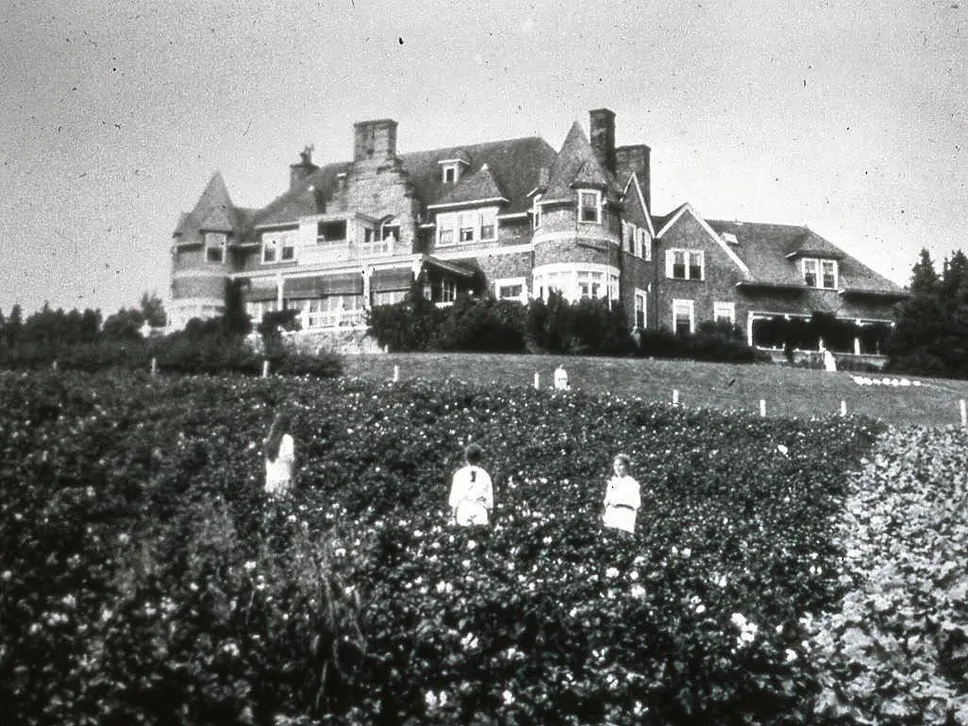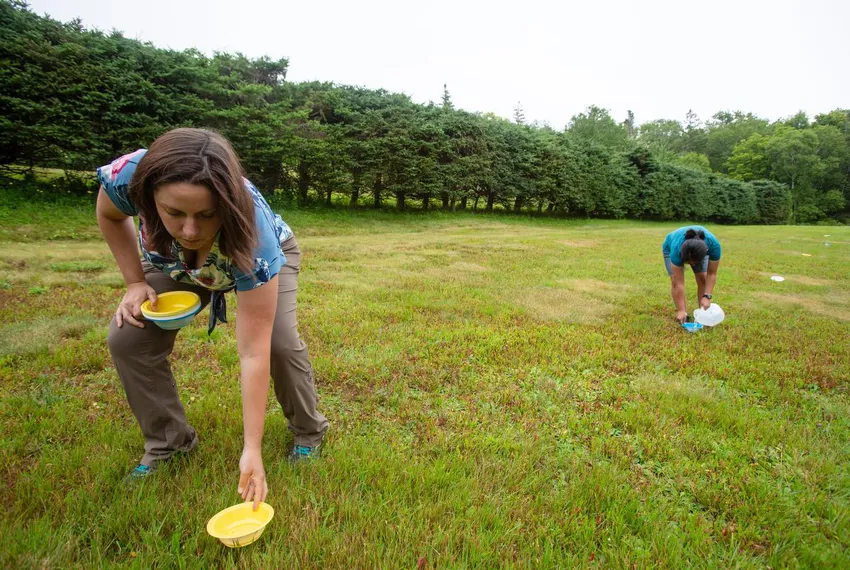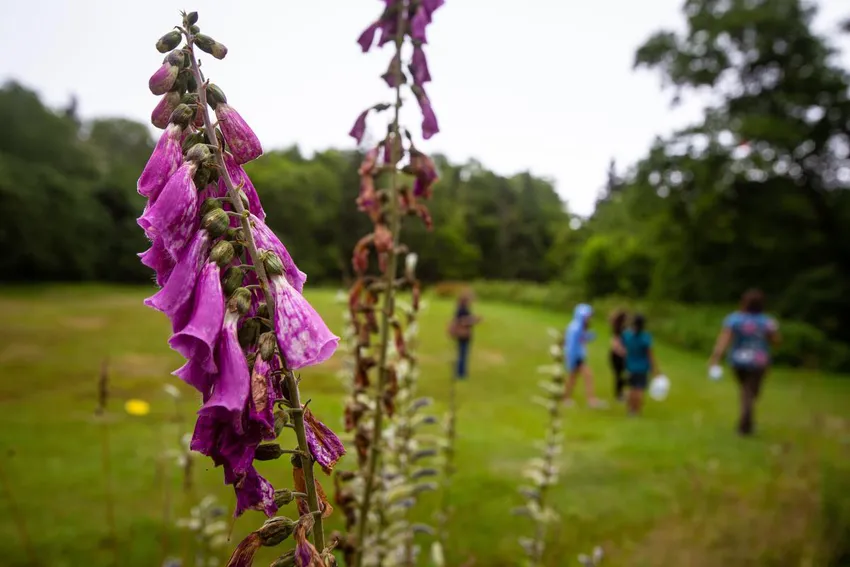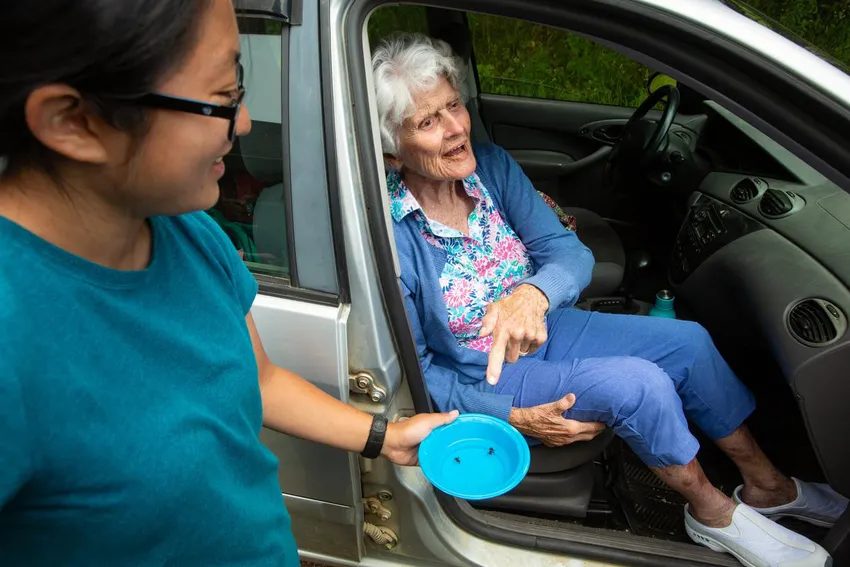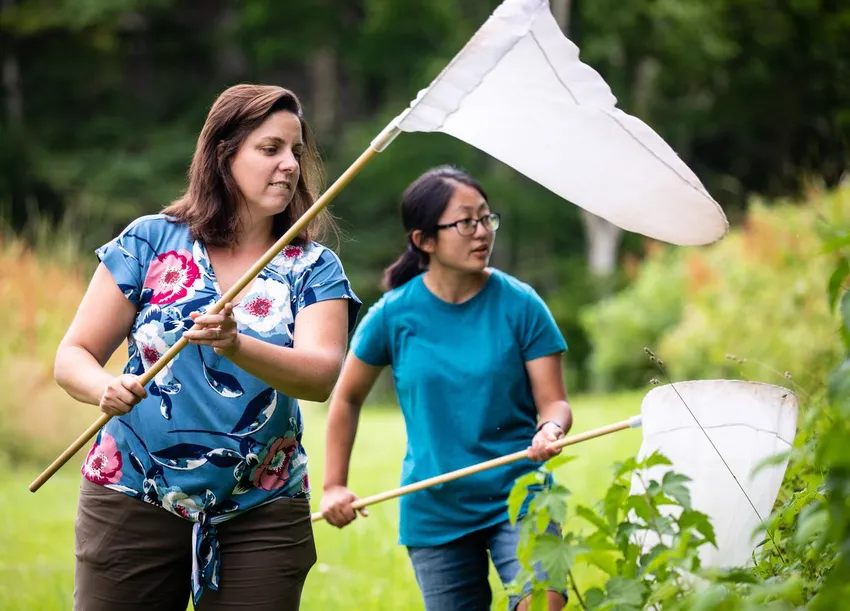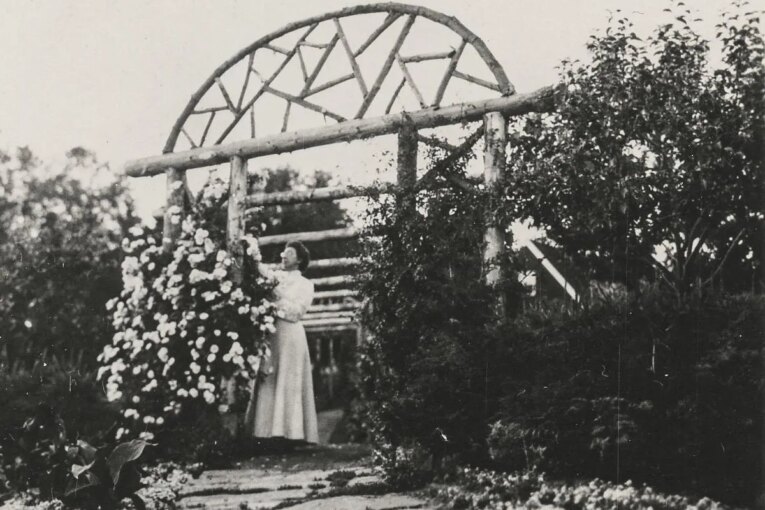
Alana Pindar is smiling broadly as she nudges a tiny green tomato with the tip of her forefinger.
It’s a small victory, this tomato, but a significant one.
That tiny tomato represents the first fruit — yes, fruit — of a garden that is as much a tribute as it is her research.
Significantly, this nascent garden is on the grounds of the Alexander Graham Bell National Historic Site in Baddeck, Nova Scotia.
But it is not the father of the telephone to which her garden pays homage; rather it is to his wife, Mabel Bell.
More than 100 years ago, on a peninsula jutting out into Bras d’Or Lake (a little over two kilometres from the Bell museum’s site now), Mabel planned, cultivated and kept meticulous records about the gardens on the Bell estate they called Beinn Bhreagh — Gaelic for “Beautiful Mountain.”
Her motive for planting the garden was not particularly unusual — she grew it to feed her family and the workers on the estate. What was unusual was that in doing so, and documenting it so thoroughly, she showed a prescient understanding of the ecology of plant systems, of the importance of crop diversity and of a hospitable environment for pollinators — mostly bees, in her case.
Which is to say, a century ago, Mabel Bell was planting solutions to issues — food security and pollinator habitat — that scientists and farmers are still grappling with today.
It is, as more than one person has put it, a case of the future catching up with the past.
Now Pindar, with the help of Mabel’s journals, is in the process of recreating those gardens at the Bell museum site.
That’s the tribute portion of the project. But primarily, Pindar is rebooting Mabel’s garden for science.
Pindar is a professor of ecosystem health and food security at Cape Breton University. Pollinators — insects and animals that carry pollen from one plant to another — are her areas of expertise.
They are important critters. One in three bites of food you put in your mouth, she says, is a direct result of the efforts of pollinators.
Yet we are staring a pollinator crisis in the face. Climate change and habitat degradation have been contributing to a significant decline in their numbers, which will ultimately make it more difficult, worldwide, to grow that one-third of your food.
In recreating Mabel’s gardens, Pindar hopes to learn something about whether and how we can turn that around.
And to do that, the largely untouched Beinn Bhreagh, where Mabel planted her crops, is an ideal comparison point.
“From a scientific point of view, that’s my control site,” she says. “That’s ground zero.
“They have not sprayed. They have not tampered with it. They have not done anything with that property.
“So, what I’m finding there, I’m going to be comparing back to the re-creation (garden) and seeing how the pollinators return. Do they return? Is there something else driving the populations in that area or is it that easy? Is it just as simple as we just need to give them their plant?”
She and CBU student Anna Fenton are placing a line of brightly coloured plastic bowls filled with soapy water near the plots, in hopes of taking a census of the bee population there.
At the museum site, Pindar has planted two plots, about 700 square feet each — the size of a smallish backyard — to demonstrate, she says, that anyone can create a garden with a lot of ecological value in a relatively small space.
One plot is filled with shrubs, bushes and flowers — peonies, lupines, black-eyed Susans, asters and the like; an attractive habitat for pollinators.
In the other plot — the vegetable garden — are planted a mix of crops: squashes, tomatoes, bell peppers, blueberries and more. These are potential targets for pollinators.
Right now, those plots are separated by about 20 metres. But at some point, the plan is to expand them so they grow together.
The goal, says Pindar, is connectivity: attracting bees, reducing the distance that they have to travel from one plant to the next, and optimizing the conditions in which they do so.
Mabel Bell knew this. She planted wildflowers alongside her garden crops to attract and shelter bees. On another side she planted a set of trees as a windbreak — bees do not like to fly against strong winds.
It worked. At Beinn Bhreagh recently, on the day of the Star’s visit, the air is calm and still — surprising, given that it rests on a hill on a point which juts out into the lake. That’s thanks to Mabel’s windbreak, but also to the surrounding forest doing the same job.
In the bushes beside the former garden, there is the low, constant, humming buzz of the bees that have taken up residence there. It’s startling because of — in retrospect — the stark absence of that sound earlier that same morning, at the museum site.
Here, at the site of the garden that Mabel built, the bees are flourishing.
Pindar and Fenton set out another line of the soapy-water bowls through what would have been the middle of Mabel’s garden, looking for an idea of the bee population at Beinn Bhreagh as compared to the museum garden.
In the less than an hour there, they will snare a handful of bees. At the museum site, after some five hours, their bee count will be zero.
They show some of their bees to Joan Sullivan, the great-granddaughter of Alexander and Mabel Bell, when she drives up to Beinn Bhreagh to meet up with Pindar.
Her face lights up as she sees Pindar’s daughter running across the lawn toward her with a friend. It’s been a long time since she’s seen children at Beinn Bhreagh.
Now in her 90s, Sullivan is still too young to have met her great-grandmother. But as a child who spent most of her summers in the Cape Breton mansion, she remembers looking north, from her room on the upper floors of the house, across the lush garden that Mabel Bell planted.
“I could see them growing from my room there on the front,” she says. “We all would go and pick big bunches of the sweet peas.”
Those sweet peas are gone now, as is Mabel’s garden. But the apple trees and the raspberry bushes she planted are still there, and still bearing fruit yearly.
Sullivan’s face lights up even further as Pindar describes her research — the bees she traps and how Mabel Bell planned and cultivated her garden to be hospitable to them.
Inside the house, generations ago, Mabel had long conversations about gardens with her son-in-law David Fairchild, who married Sullivan’s grand-aunt.
Fairchild has been called “the food explorer” for his travels around the world and his importation of crops for cultivation in the U.S. He’s responsible for the introduction of, among other things, soybeans, pistachios, kale, quinoa, mangos, nectarines, and dates. The cherry trees that famously blossom every year in Washington, D.C.? That was Fairchild, too.
Their talks, says Fenton, covered a lot of the things that we talk about today: diversifying crops to protect food supplies, introducing new crops to consumers and providing suitable habitats for the pollinators of those crops.
Ultimately, according to Mabel’s journals, they came to the same conclusions a century ago that Pindar and fellow scientists are trying to teach growers today.
“Don’t put all your eggs in one ecological basket,” says Fenton. “That’s what monoculture farmers do. They focus all their attention on one thing, and if something happens — and it will — then they lose their crop. And if their crops are threatened, their livelihood is threatened and they can’t support themselves or their family.”
“Unfortunately, we’re going to run into another pandemic … and the global supply chain is going to get worse,” adds Pindar. “But this blueberry bush is still going to be here. And it could feed four or five people blueberries … Sustainability is simple at its core.”
Mabel’s garden, and the restored version that Pindar is growing at the museum site, are small patches of greenery in the grand scheme of things.
But as the world’s food supply is increasingly threatened, and as the supply chain that transports it continues to wobble, the issues addressed in those gardens — sustainability, self-sufficiency and diversification — resonate on a global scale.
“Mabel’s garden gives me the big picture,” says Mary Tulle, chair of the board of the Alexander Graham Bell Foundation. “The big picture is being able to educate our children so that every child knows they can be part of making our world and our environment and our food safety and security better.”
You can read more of the news on source

